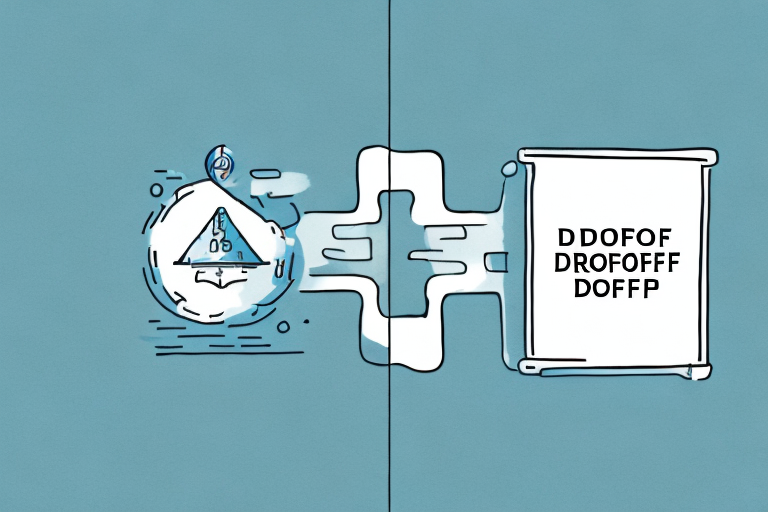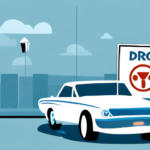What are Drop-Off Services?
Drop-off services refer to a model in which customers can drop off or pick up items for specific services, such as laundry, repairs, or deliveries. This approach allows for increased convenience and flexibility for customers, as they do not have to be present for the entire service process. Drop-off services also benefit businesses by enabling them to operate more efficiently and maximize their use of resources, such as time, staff, and space.
One of the key advantages of drop-off services is that they can help to reduce wait times for customers. According to a Statista report, reducing customer wait times significantly improves satisfaction rates. By allowing customers to drop off their items and then return later to pick them up, businesses can avoid long lines and wait times that can be frustrating for customers. This can help to improve customer satisfaction and loyalty, as well as reduce the workload for staff.
Another benefit of drop-off services is that they can help to reduce the risk of damage or loss of items. When customers drop off their items, they can be securely stored until they are ready for processing or delivery. This can help to prevent damage or loss that can occur when items are being transported or handled by customers themselves. Additionally, businesses can use tracking systems to monitor the location and status of items, further reducing the risk of loss or damage.
How Drop-Off Services Can Help Your Business Grow
By offering drop-off services, your business can attract a wider range of customers who value convenience and flexibility. This can lead to increased revenue and customer loyalty. Additionally, implementing drop-off services can improve your efficiency and lower costs, through reduced staffing needs and time spent waiting for customers. According to a Harvard Business Review study, businesses that prioritize convenience see a 15% increase in customer retention.
Furthermore, drop-off services can also help your business to expand its reach beyond its physical location. By offering online drop-off options, customers can easily send in their items for repair or service, regardless of their location. This can open up new markets and increase your customer base. Additionally, drop-off services can also provide valuable data and insights into customer behavior and preferences, which can inform future business decisions and strategies.
Types of Drop-Off Services Available
There are various types of drop-off services, depending on the industry and specific needs of your business and customers. Some common examples include:
- Laundry and dry-cleaning drop-off services
- Repair and maintenance drop-off services
- Delivery and pick-up services
- Mail and package drop-off services
- Pharmacy and prescription drop-off services
Each type of service requires different logistics and resources, so it's important to carefully consider which options would be the best fit for your business.
It's also important to consider the location and accessibility of your drop-off services. For example, if you offer repair and maintenance drop-off services, it may be beneficial to have multiple locations throughout the city to make it easier for customers to drop off their items. Additionally, offering online scheduling and tracking options can improve the customer experience and streamline the drop-off process.
Implementing Drop-Off Services in Your Business
Steps to Implement Drop-Off Services
Before implementing drop-off services, it's important to research your options and evaluate your needs and resources. This may involve determining the necessary staffing, equipment, software, and marketing approaches to effectively integrate the service into your operations. You may also need to consider legal and liability factors, such as insurance and customer agreements. Once you have a plan in place, you can begin testing the service with a small group of customers and refining it based on feedback. Eventually, you can roll out the service to a wider audience and/or incorporate it as a key part of your business strategy.
Choosing the Right Drop-Off Service Provider
If you decide to work with a third-party provider for drop-off services, there are several key factors to consider when choosing a partner:
- Experience and reputation in the industry
- Quality of customer service and communication
- Pricing and service level options
- Availability and flexibility
- Security and accountability measures
By prioritizing these criteria, you can find a provider that aligns with your business goals and delivers high-quality services to your customers.
Another important factor to consider when choosing a drop-off service provider is their technology capabilities. You want to work with a provider that has a user-friendly platform that integrates with your existing systems. This will ensure a seamless and efficient process for both you and your customers.
Additionally, it's important to choose a provider that offers tracking and reporting capabilities. This will allow you to monitor the status of your shipments and identify any potential issues before they become major problems. It will also provide valuable data that you can use to optimize your supply chain and improve your overall business operations.
Promoting Your Drop-Off Services
Once your drop-off services are up and running, it's essential to market them effectively to maximize their impact. This may involve using targeted advertising, social media campaigns, or referral programs to raise awareness and incentivize usage. You can also leverage word-of-mouth and customer reviews to build trust and credibility. By actively promoting your drop-off services, you can attract new customers and deepen relationships with existing ones.
One effective way to promote your drop-off services is to partner with other businesses in your community. For example, if you offer dry cleaning drop-off services, you could partner with local hotels or apartment complexes to offer your services to their guests or residents. This can help you reach a wider audience and establish yourself as a trusted and convenient option for their needs.
Another strategy is to offer special promotions or discounts for first-time users of your drop-off services. This can encourage people to try out your services and potentially become repeat customers. You can also offer loyalty programs or rewards for frequent users to incentivize continued usage and build customer loyalty.
Measuring the Success of Your Drop-Off Service Strategy
To ensure that your drop-off service strategy is effective, it's important to regularly measure and track performance metrics. This may involve analyzing customer feedback, usage rates, revenue generated, and efficiency gains over time. By continually monitoring your results, you can identify areas for improvement and make data-driven decisions to optimize your service offerings.
One important metric to consider when measuring the success of your drop-off service strategy is customer satisfaction. This can be measured through surveys or feedback forms, and can provide valuable insights into how well your service is meeting the needs and expectations of your customers. By addressing any issues or concerns raised by customers, you can improve their overall experience and increase the likelihood of repeat business.
Another key metric to track is the efficiency of your drop-off service. This can be measured by analyzing the time it takes for customers to drop off their items, as well as the time it takes for your team to process and fulfill orders. By streamlining your processes and reducing wait times, you can improve the overall efficiency of your service and increase customer satisfaction.
Cost Effectiveness of Drop-Off Services
Implementing drop-off services can lead to significant cost savings for your business, as it allows you to more efficiently allocate resources and reduce overhead costs. For instance, using a delivery service to handle package drop-offs can eliminate the need for dedicated staff for this task. By carefully evaluating the costs and benefits of each type of drop-off service, you can determine which options will have the greatest overall impact on your bottom line.
In addition to cost savings, drop-off services can also improve customer satisfaction and retention. By offering convenient drop-off locations or pick-up options, you can provide a more flexible and accessible service to your customers. This can lead to increased loyalty and repeat business, as well as positive word-of-mouth recommendations. Furthermore, drop-off services can also help to streamline your operations and reduce the risk of errors or delays in delivery, which can further enhance your reputation and customer satisfaction.
Successful Examples of Drop-Off Services
Drop-off services have been successfully implemented by businesses in a variety of industries, including:
- Dry-cleaning companies, such as ZIPS and Tide Dry Cleaners
- Repair services, such as iFixit and uBreakiFix
- Retail and delivery businesses, such as Amazon Locker and UPS Access Point
- Pharmacies, such as Walgreens and CVS
By studying these examples, you can gain insights into how different businesses have leveraged drop-off services to improve their operations and customer satisfaction.
For example, Tide Dry Cleaners has implemented a 24/7 drop-off service that allows customers to drop off their clothes at any time, even when the store is closed. This has increased convenience for customers and allowed the business to operate more efficiently. Similarly, Amazon Locker has implemented a drop-off service that allows customers to pick up their packages at a convenient location, rather than waiting for a delivery at home. This has improved customer satisfaction and reduced the number of missed deliveries.
The Future of Drop-Off Services in Business
As consumers continue to prioritize convenience and flexibility in their shopping and service experiences, drop-off services are likely to become increasingly prevalent across industries. Businesses that are early adopters of this model and can effectively integrate it into their operations stand to gain a competitive advantage and position themselves for long-term success in the future.
In conclusion, drop-off services provide numerous benefits for businesses looking to improve customer satisfaction and operational efficiency. By understanding the different types of services available, implementing them effectively, and promoting them strategically, businesses can unlock new opportunities for growth and enhanced service offerings.








